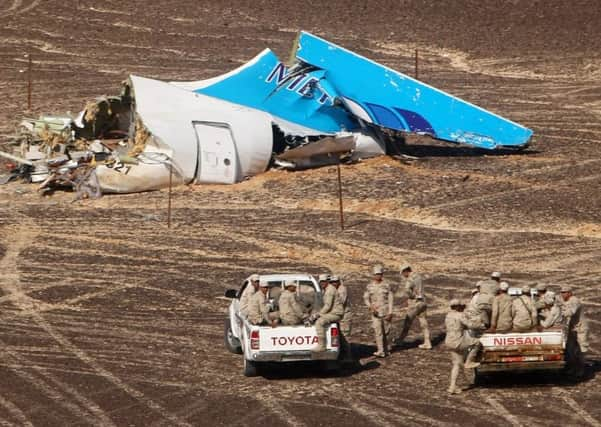‘External impact’ downed Russian jet over Sinai


In Washington, James Clapper, the US director of national intelligence, said that while there is no direct evidence of any terrorist involvement yet, it could not be excluded that the plane was brought down by Islamic State extremists in Sinai.
“It’s unlikely, but I wouldn’t rule it out,” he said, speaking in Washington.
Advertisement
Hide AdAdvertisement
Hide AdMetrojet, the Russian carrier that operated the crashed jet, firmly denied that the crash could have been caused by either equipment failure or pilot error.
“The only possible explanation could be an external impact on the airplane,” Metrojet’s deputy director Alexander Smirnov said yesterday in Moscow.
When pressed for more details about the type of impact and what could have caused it, Smirnov insisted that he was not at liberty to discuss details because the investigation was ongoing. He also did not explain whether he meant something had hit the plane or that some external factor had caused the crash.
Asked if the plane could have been brought down by a terror attack, he said only that “anything was possible”.
Russia’s top aviation official, Alexander Neradko, chided the company for jumping the gun on the investigation.
Neradko, speaking in televised comments from Egypt, decried Metrojet’s comments as “premature and not based on any real facts”. He said it would only be possible to draw firm conclusions about the crash after experts have studied the scattered fragments of the plane in Sinai and the content of its black boxes.
The Airbus A321-200 was flying at 31,000 feet over the Sinai Peninsula when it crashed just 23 minutes after taking off from the Egyptian Red Sea resort of Sharm el-Sheikh en route to St Petersburg.
Smirnov described the A321-200 as a reliable aircraft that would not fall into a spin even if the pilots made a grave error because its automatic systems would correct crew mistakes.
Advertisement
Hide AdAdvertisement
Hide AdViktor Yung, another deputy director general of Metrojet, said the crew did not send a distress call and they did not contact traffic controllers before the crash.
Egyptian officials have offered conflicting accounts on whether or not the plane issued any distress calls.
Neradko said the large area over which the plane’s debris were scattered indicated that it had broken up at high altitude.